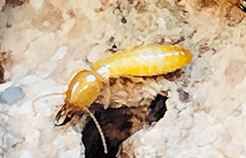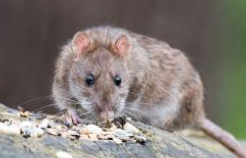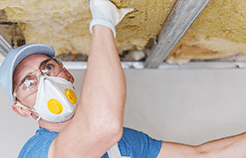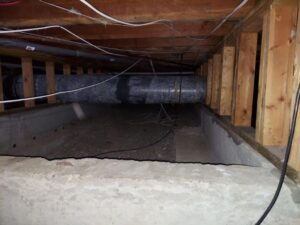You laid down the slab, sealed out the rats: game over? Not even close. That concrete shield under your crawl space needs more than wishful thinking to stay solid. Left unchecked, it can crack, shift, or trap moisture, undoing the whole point of installing it in the first place.
Stay ahead of the wear, and your slab keeps doing its job: blocking pests, keeping air clean, and stopping damage before it starts. Maintenance isn’t hard, it’s just smart. Let’s get into the must-dos before small issues turn into major repairs.
Let’s go through what you need to know about rat slab maintenance.
Keeping It Dry
Moisture is the enemy of a stable rat slab when you’re working on rodent prevention. Even though the concrete acts as a barrier, persistent dampness around or beneath the surface can slowly compromise its integrity. Water doesn’t just weaken the slab; it creates ideal conditions for:
- Mold
- Mildew
- Wood rot
- Pest activity
A dry crawl space is essential if you want your rat slab to do its job long term. Start with the basics: check that water is draining away from your home, not toward it. Poor grading, clogged gutters, or short downspouts can lead to pooling water right along the foundation, which seeps into crawl spaces and sits under the slab.
Over time, this moisture erodes the soil, undermines the slab, and attracts rodents seeking warmth and shelter. Inside the crawl space, a vapor barrier is often the first line of defense.
Seal Access Points
Even with a fully intact rat slab, pests will exploit any openings they can find around it. A small crack around a pipe or an unsecured crawl space vent can undo everything your slab was installed to prevent. That’s why sealing all access points is just as important as maintaining the slab itself. Rodents only need an opening the size of a quarter to squeeze through.
If your home has exposed utility lines or loose vent covers, those become easy entry routes. Over time, pests can chew, dig, or push their way through vulnerable materials, especially if they detect warmth or nesting potential inside. Focus on sealing the perimeter of the crawl space where the slab meets the foundation.
Common problem areas include:
- Plumbing penetrations and HVAC ducting
- Electrical conduit and cable lines
- Foundation wall cracks or seams
- Loose, missing, or corroded vent screens
- Gaps around access hatches or doors
Use rodent-proof materials like steel mesh, concrete caulk, or expanding foam designed for pest exclusion. Don’t rely on soft materials like standard insulation or plastic sheeting, they’ll be shredded in days if pests are motivated.
Keep an Eye Out for Shifting and Cracks
Concrete doesn’t stay flawless forever, especially in crawl spaces where soil can shift and moisture levels fluctuate. Even though a rat slab isn’t designed to carry structural loads and movement in the slab can signal deeper issues or open the door to pests. That’s why it’s important to monitor your slab regularly for signs of stress, shifting, or damage.
Hairline cracks are common as concrete cures and settles. Most of these are harmless. The concern begins when cracks widen, deepen, or show signs of movement. Gaps larger than 1/8 inch, especially those that extend across the slab or follow patterns along utility lines, may allow rodents to work their way back in.
Crumbling edges or chips around access points can also become weak spots fast. Soil movement beneath the slab is another red flag. If you notice uneven sections, raised areas, or the slab pulling away from the foundation wall, the ground may be shifting under your home. This often occurs with:
- Poor drainage
- Tree root intrusion
- Freeze-thaw cycles
- Heavy foot traffic
During your regular crawl space inspections, walk the full perimeter and shine a light across the slab’s surface at a low angle. This helps reveal small changes in elevation, separation, or warping that might not be visible head-on.
Get Professional Help to Prevent Rodent Damage
When it comes to rat slab upkeep, pest control experts bring more than just traps and repellents; they bring insight into how pests think, move, and exploit weaknesses most homeowners overlook. If you’re noticing:
- Signs of intrusion
- Unexplained noises
- New droppings
- Gnawed material near your crawl space
Partnering with a pest control company familiar with rat slab systems ensures your slab isn’t just surviving; it’s actively defending your home. This isn’t one-size-fits-all work. The soil conditions, pest species, and home layout all play a role. A pest expert tailors the plan, strengthens weak spots, and keeps your home sealed tight where it counts.
Take More Pest Control Steps
A rat slab is a powerful deterrent, but it’s not a standalone solution. To truly keep rodents and pests out, the slab must be part of a comprehensive pest control strategy that treats your entire property as a defensive zone. If rats, mice, or insects are still finding their way into your crawl space, it means they’re exploiting vulnerabilities elsewhere.
Start with the outside. Keep vegetation trimmed at least a foot away from your foundation, and don t stack firewood, lumber, or storage bins near your home s base these create perfect nesting spots and give pests a launchpad toward your crawl space. Keep garbage in sealed containers and make sure bird feeders aren’t attracting scavengers. Ongoing pest management should also include:
- Routine exterior inspections for burrows, droppings, and rub marks
- Bait stations or live traps are placed strategically around the perimeter
- Monitoring for signs of chewing or nesting near HVAC units, outdoor wiring, or irrigation systems
- Regular crawl space inspections to detect early signs of infestation
Rat Slab Maintenance: Now You Know
Clearly, there’s a lot that goes into maintenance for rat slabs. With this guide, you should be better able to protect your home.
Your rat slab may be out of sight, but it’s never out of mind at Eastside Exterminators. Rodent protection starts from the ground up, and we’ve been defending Seattle homes from the crawlspace up since 1969. Whether you need a post-installation inspection, SMART monitoring integration, or full insulation support, our family is here to protect yours.
Call today to schedule a maintenance check with our expert team. Let’s make sure your home stays sealed, safe, and rodent-free year-round.

 (425) 318-7912
(425) 318-7912
 MY ACCOUNT
MY ACCOUNT
 425-318-7912
425-318-7912









